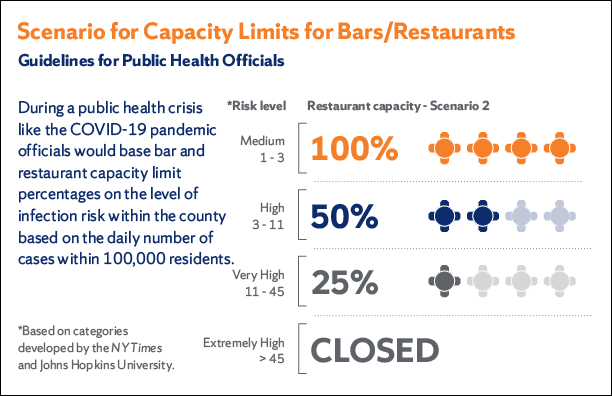Author Eric A. Schiff
DOWNLOAD THE FULL BRIEF [PDF]
View SyracuseCoE’s other research briefs
Summary:
Restaurants and bars are places where airborne diseases like COVID-19 are easily transmitted from one patron to another. Data show that restaurants and bars add significantly to new infections in a community. When a community’s rate of new infections rises too high, health authorities around the country are reducing the capacity limits of bars and restaurants. However, the connection between the capacity limits and the community infection rate has not been quantified and can appear arbitrary.
In recent research, we proposed capacity limits based on calculations using the community’s rate of new infections. We use the county risk categories developed by a collaboration with The New York Times, the Johns Hopkins University Bloomberg School of Health, and Resolve to Save Lives, an initiative of Vital Strategies. The principle is that COVID-19 infections from restaurants and bars should be kept to the rate when the risk category is relatively low. As shown in the graphic below, in one scenario officials would act when the county moves from the medium to the high-risk category. A 50% capacity limit will then keep the infection rate down to the numbers when the risk level was medium. If the very-high-risk category is reached, restaurants would be limited to 25% capacity. The number of new infections is then again reduced to the rate at the medium risk level. To learn more about other scenarios that health officials could use, including the consideration of indoor ventilation systems, the calculations used in these determinations, and further recommendations, read the full article here.

About the Author
Eric A. Schiff, Ph.D., is interim director of SyracuseCoE (Syracuse Center of Excellence in Environmental and Energy Systems) and Professor in the Department of Physics at Syracuse University. email: easchiff@syr.edu .
